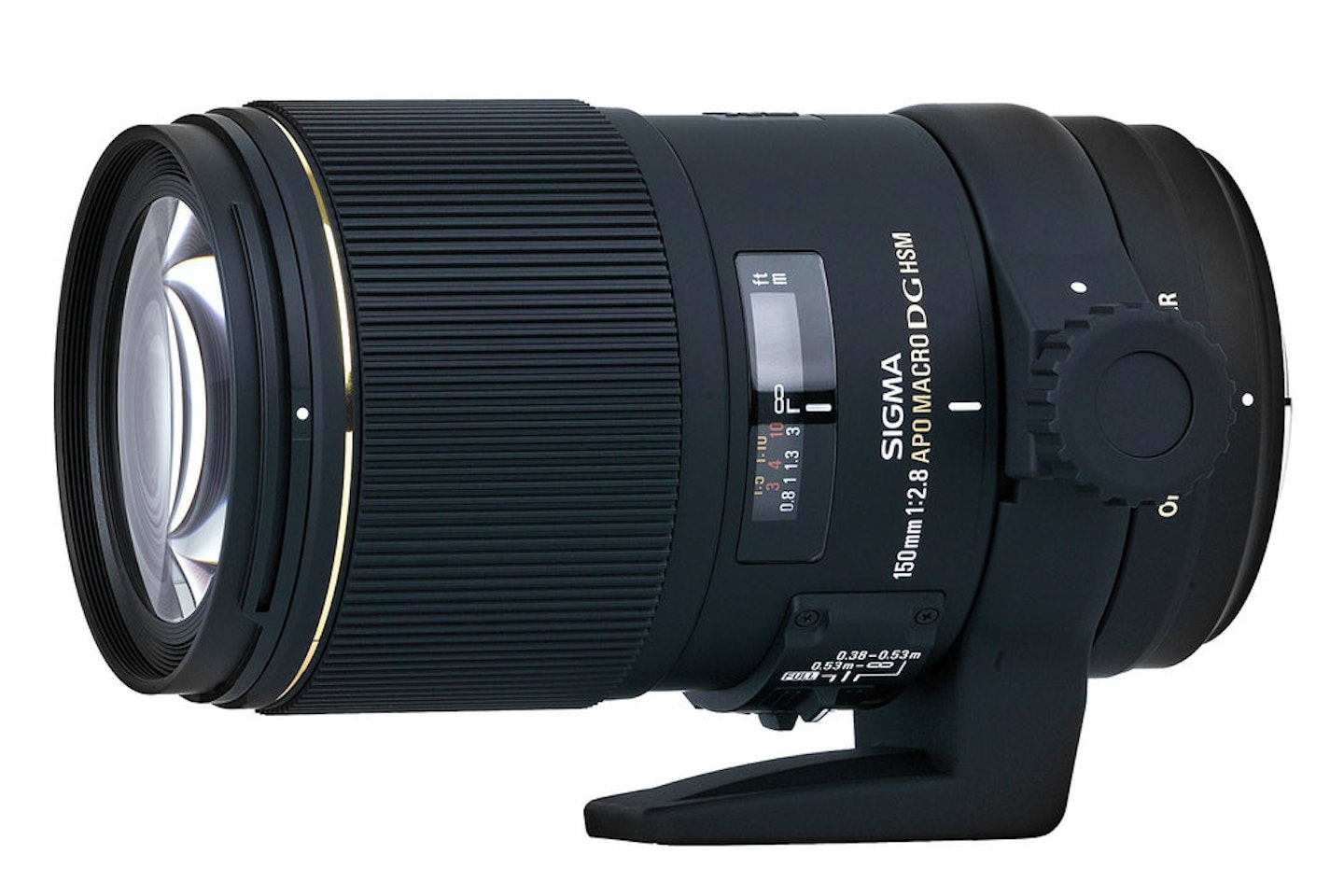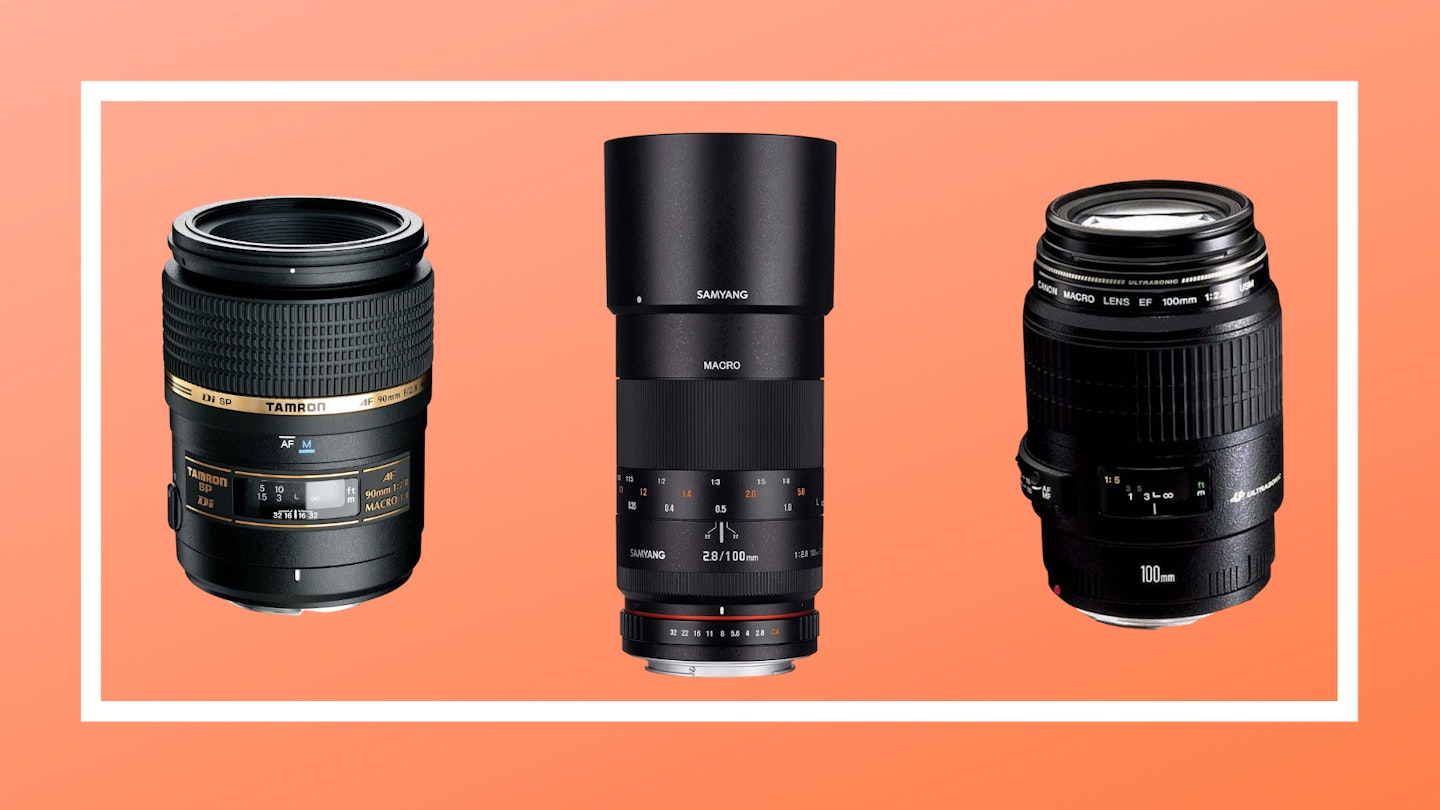These specialist optics allow the focal point to be extremely close to the end of the lens, which means you can fill the frame with minuscule detail and magnify small objects to achieve impressive – and often surreal – results, and reveal worlds otherwise unseen.
We’ve rigorously tested 10 of the best macro lenses currently available. All of the lenses here boast a true-to-life reproduction ratio of 1:1 or more, and are available for under £1000. Let’s find out who makes our top ten.
.jpg?auto=format&w=1440&q=80)
CANON'S 100MM MACRO FEATURES WEATHER SEALING AND A USM
Canon’s premium 100mm L-series macro offers 123mm of sturdy plastic design, but with a respectable weight of 625g. The standout feature is the Hybrid optical IS, helping negate rotational and linear camera shake and giving back 4 stops, though less at 1x magnification.
While not the cheapest in test, you do get a lot for your money, with weather-sealing and an Ultra-low Dispersion lens (UD) element to combat chromatic aberration. We found the UD to work well, practically eliminating any trace of fringing.
Vignetting is only noticeable at apertures wider than f/5.6. The sharpness falls off slightly in the corners at wider apertures, but once you hit the f/8 sweet spot, the whole frame displays exceptional sharpness. The quiet Ultra Sonic Motor (USM) means you can shoot close-up without scaring your subjects and the limit switch will narrow down the autofocus range to give you quicker focusing.

SIGMA'S 150MM MACRO DELIVERS NEAR-CIRCULAR BOKEH
Sigma has three macro lenses in its range – the 105mm, 150mm and 180mm – and this model comes with a plethora of features, such as a Hyper Sonic Motor (HSM) for near-silent AF and a 4-stop built-in optical stabilisation. You also get an AF limiter switch for improved autofocus and an aperture range of f/2.8 to f/22.
At 1150g, this is the heaviest lens here, but it feels extremely well balanced, and a tripod collar is included to add stability. The lens itself has a premium finish and feels well constructed, packing in a massive 19 elements in 13 groups, and with 9 blades for attractive near-circular bokeh in out-of-focus areas.
With the increased focal length comes a 38cm minimum focusing distance, which allows for 1:1 without the lens casting a shadow on your subject. Super Multi-Layer Coating cancels chromatic aberration extremely well, though vignetting is present until f/8. Sharpness in corners is one of the best in test at wider apertures, but isn’t perfect until f/11.
.jpg?auto=format&w=1440&q=80)
SAMYANG'S 100MM MACRO DELIVERS SMOOTH FOCUSING AND IS SHARP AT F/2.8
At a hefty 730g, this aluminium alloy lens is the third heaviest and second longest in test, owing to its whopping 15 elements in 12 groups. Historically, Samyang has favoured all-manual lenses, making them a great choice for serious videographers, and the same is true here, except for the Nikon-fit model which comes with a circuit chip allowing for exposure control through the camera.
The focusing ring is both tight and very smooth, and the aperture ring has reassuringly distinct clicks. The lens itself contains its own UMC (Ultra Multi Coating) technology to reduce flare, which appeared to do its job in our tests. Chromatic aberration is non-existent, although there is some light vignetting at f/2.8, which disappears between f/5.6 and the maximum f/32.
The centre sharpness rivals that of other lenses in our test and the fall-off towards the edge of the images appears relatively minimal by f/2.8. At f/8, however, the image is universally sharp.
TAMRON'S 180MM MACRO DELIVERS GREAT CENTRAL SHARPNESS
Tamron brings us the longest focal length here, with its 180mm f/3.5-32 beast. The 985g plastic-bodied behemoth has a minimum focusing distance of 47cm for a true 1:1 reproduction, and an LD (Low Dispersion) element to decrease chromatic aberration to virtually zero. Working at longer lengths is unusual in macro photography, but it does allow you to keep a distance from your subject, get a tighter angle-of-view on the background and reduce the risk of casting a shadow.
The lens produces great central sharpness throughout the range, but either side of f/5.6 or f/11 there is some softness in the corners and, although not too severe, it is noticeable. The same is true for vignetting, which is definitely present at apertures wider than f/8.
Build quality is decent and the large front element ensures the lens reacts well in all lighting conditions. The included tripod collar makes for steadier long exposures. The AF doesn’t have a limiter, but still works well.
.jpg?auto=format&w=1440&q=80)
CANON'S MP-E 65MM STOPS DOWN TO F/16
Canon’s all-manual 65mm is a 1-5x prime. This means that the magnification is 5x that of any other lens in test. In reality it’s almost impossible to use handheld at its minimum focusing distance, as the depth-of-field is so incredibly shallow and, being so close to the subject, the lens obstructs light. This makes it best suited to tripod use, and there’s a sturdy collar for a more balanced setup.
With a 24cm minimum focusing distance (from the sensor, not the end of the lens) you can actually get to near-microscopic levels of detail. The aperture is f/2.8 at its widest, stopping down to f/16, which means it doesn’t have the aperture range of some other lenses here. Although completely unique, it’s definitely not the most mobile either, weighing a rather cumbersome 710g.
Thanks to its UD (Ultra-low Dispersion) lens element to combat chromatic aberration and Super Spectra lens coating to suppress flare and ghosting, any optical imperfections are extremely minimal.
.jpg?auto=format&w=1440&q=80)
Extend your creative opportunities with this well-specced Tamron Macro lens.
The 90mm f/2.8 Di USD VC updates Tamron’s ‘classic’ 90mm macro, and comes bursting with new features. It comes in Nikon, Canon and Sony mounts and fits APS-C and full-frame D-SLRs, although the Sony version doesn’t feature Vibration Compensation (VC) due to the built-in IS in Sony bodies.
The Tamron 90mm is a great lens that offers lots of scope for creative work. We enjoyed the flexibility of its constant minimum and maximum apertures and the large manual focusing ring performed really smoothly. It also packed in plenty of advanced features, with its UltraSonic Drive allowing near-silent AF and Vibration Compensation function bagging sharper shots, while the build felt nicely balanced with our test camera.
Dive into a whole new world of photography with an affordable third-party macro lens such as this Sigma model.
The Sigma 105mm f/2.8 is available in Canon, Nikon, Sony and Sigma mounts, fitting full-frame and APS-C D-SLRs. Sixteen glass elements in 11 groups make up the optics and a Super Multi-Layer Coating reduces flare and ghosting. The maximum f/2.8 aperture is great for portraits, but drops to f/5.6 when focused at full macro, which slows the shutter speed options when shooting at 1:1. At the other end of the scale, the minimum f/22 aperture is extended to f/45 at the closest focusing distance.
Although it’s not the cheapest of lenses, the Sigma 105mm macro proved to be worth its price-tag. The HyperSonic Motor provided the fastest and most accurate AF and the Optical Stabilizer was invaluable for handheld shots, but where the lens really excelled was in the image quality it produced. Chromatic aberration control was excellent, with next to no fringeing apparent throughout the entire aperture range, and the optics also delivered the best results for both centre and edge sharpness. The only downside of the 105mm was its weight; it feels beefy even on a larger body, so if you’re using a smaller D-SLR or haven’t been eating your spinach, the Tamron 90mm may be the preferred option, as it offers a weight saving of 175g.
.jpg?auto=format&w=1440&q=80)
www.parkcameras.com
Nikon’s 60mm f/2.8G AF-S ED Micro lens is compatible with Nikon’s complete range of D-SLRs, including APS-C (DX) models like the D3100, D5000 and D7000, as well as full-frame cameras like the D700 and D3X.
A DX-format D-SLR like the D3100 or D7000 sports a 1.5x crop factor, so gives the Nikon 60mm f/2.8G ED AF-S Micro a film-equivalent focal length of 90mm, while full-frame FX-format users can use it as a 60mm lens with no change in focal length.
This is a large lens so it’s no surprise that it’s heavy, weighing 425g. The extra few grams in weight are no bad thing, though, and contribute to its excellent, refined feel. It features internal focusing (IF) which eliminates any change in the barrel length when the focus ring is adjusted and keeps the handling consistent. As to be expected for a lens that’s relatively new, the build quality is exceptional. The large focus ring operates smoothly with a perfectly balanced and weighted feel through its range.
Subscribe to the What’s The Best Newsletter to keep up to date with more of the latest reviews and recommendations from Kirk and the rest of the What’s The Best team.
Kirk Schwarz is a tech-addicted photographer with over a decade's experience; Kirk’s used to putting new gear through extreme field testing. He's previously written for Practical Photography.

.jpg?auto=format&w=1440&q=80)
.jpg?auto=format&w=1440&q=80)
